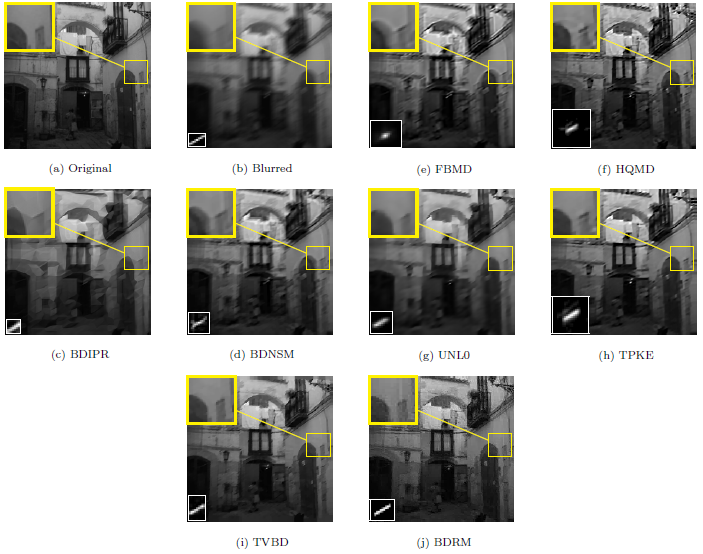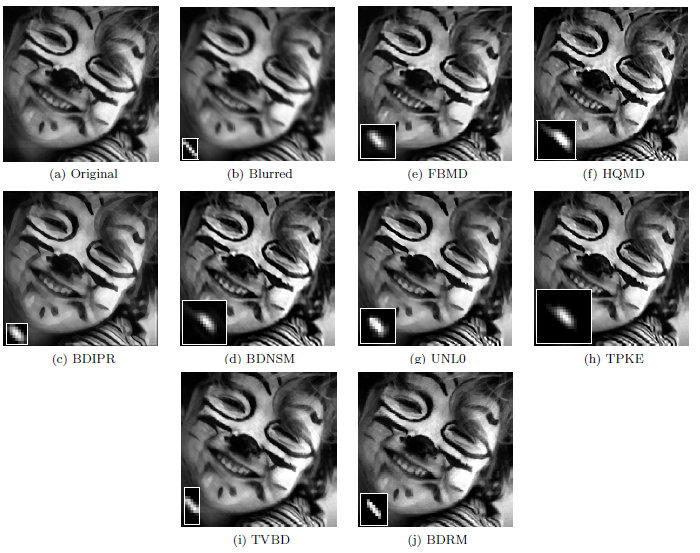Flowchart

Simulation Results







Results for small and medium kernels (Numerical results in supplementary document)


Related Publications
M. Tofighi, Y. Li, V. Monga, "Blind Image Deblurring Using Row-Column Sparse Representations", IEEE Signal Processing Letters, Vol. 25, No. 2, pp. 273-277, 2017. [arXiv][IEEE Xplore]
Supplementary Document
Supplementary document is available here.
Convergence Analysis
Convergence analysis is available here.
Code
The codes for this pape are available here.
Selected References
A. Ahmed, B. Recht, and J. Romberg, "Blind deconvolution using convex programming," IEEE Transactions on Information Theory, vol. 60, no. 3, pp. 1711-1732, March 2014[paper].
A. Levin, Y. Weiss, F. Durand, and W. T. Freeman, "Understanding blind deconvolution algorithms," IEEE Transactions on Pattern Analysis and Machine Intelligence, vol. 33, no. 12, pp. 2354-2367, Dec 2011[paper].
D. Perrone and P. Favaro, "A clearer picture of total variation blind deconvolution," IEEE Transactions on Pattern Analysis and Machine Intelligence, vol. 38, no. 6, pp. 1041-1055, June 2016.. [paper].